- The Santa Fe has 14.6 cubic feet of cargo space behind its third row.
- That's one of the smallest volumes among three-row SUVs.
- Our real-world test shows how much the Santa Fe exceeds expectations.
Hyundai Santa Fe Cargo Test: How Much Fits Behind the Third Row?
Boxy is better
There are trends that have emerged after doing almost 200 of these cargo tests, but the most consistent one has been that boxy is better. Case in point: The Hyundai Santa Fe got a lot boxier for its latest generation. It didn't get much bigger outside (about 2 more inches in length, wheelbase and height), but the interior expanded enough to squeeze in a whole extra row of seats. Thank you, boxiness.
That third row is more spacious than what you'll find in a Kia Sorento and a lot of luxury three-row SUVs, but it's still best suited for big kids and small adults. Using it also shrinks cargo capacity from 40.5 to 14.6 cubic feet. That puts the Santa Fe down at the bottom of the pack in terms of cargo space behind the third row, ahead of only the Sorento (12.6 cubes) and Mitsubishi Outlander (11.7 cubes) in terms of non-luxury models. Even the Toyota Highlander is better at 16 cubic feet. None of those are boxy, however. Let's see what difference a box makes.
Here it is. When I saw the new Santa Fe at an auto show, I climbed into the third row and looked at this cargo area. The conclusion: Hyundai had sacrificed cargo capacity for third-row space. I'm Mr. Cargo Test, but that seems like a smart trade-off.
This really is a small space, especially in terms of length. It's quite similar to the Sorento in this regard. (The two are mechanically related.) But note how upright that rearmost pillar is and how much space there is between it and the third row. By comparison, the Sorento's rearmost seatback nearly touches the tailgate.
Here's what's cooking under the floor. The area on the left isn't useless, but it's also too small for any of my bags. No help here.
OK, now for some housekeeping. Like most third rows, the Santa Fe's can recline. When cargo testing, I jump and/or squeeze in the back and set the recline for what I would consider a comfortable angle. Not bolt upright, not Fat Joe Lean Back. It's admittedly imprecise. I then add bags.
Speaking of which, here's some nice boilerplate information about their dimensions. There are two bags you'd definitely have to check at the airport: Big Gray (26 inches long x 16.5 inches wide x 12 inches deep) and Big Blue (26 x 16.5 x 10). There are three roll-aboards that usually fit as carry-on: Medium Tall (24 x 14 x 9), Medium Wide (23 x 15 x 9) and the smaller Green Bag (21 x 14 x 9.5). Finally, there's everyone's favorite Fancy Bag (21 x 12 x 11), a medium-size duffle.
Huzzah, boxiness! I knew it would probably exceed expectations, but this result was even better than I expected. This photo includes the Big Blue bag, two roll-aboards and the Edmunds Golf Classic Duffel (20 x 10.5 x 10.5) to fill in the empty space.
The Highlander and Mazda CX-90 had my Medium Wide and Fancy Bag instead of Big Blue and Edmunds Duffel. So, they're worse. The Sorento could only fit the two bags on the left, while the Outlander managed those two plus the Fancy Bag.
Well done, yes, but this is still a worse result than other, bigger three-row SUVs. It's not that close either. The Nissan Pathfinder, which I'd put next on my board (if there was a board, I should really have a board), can relocate the duffel bag under its floor and replace it with my Medium Wide bag.
Remember the reclining third row, however. On the left is the "comfortable" angle I tested with above. On the right is an angle I think most people would be OK with going around the corner to dinner, but not someplace far enough that you're bringing along four suitcases.
This doesn't look like much but, believe me, it feels like much.
Let's test again.
Making my third-row occupants reasonably unhappy allowed me to swap the duffel bag for Medium Wide. There's still no way to keep that duffel aboard, though, so the Santa Fe is still coming under the Pathfinder. Still, I think this is pretty good and another testament to boxiness.
Also, outside its segment, the Santa Fe's comfortable seatback result exceeded the Volvo XC90 and Audi Q7 (equal to the Highlander). It greatly exceeded the Cadillac XT6 (two medium bags plus duffel) and the also-boxy Lexus GX (two medium bags only). It falls just short of the Toyota Sequoia.
And finally, since there's a decent chance everything's not going to fit inside, the Santa Fe has raised roof rails. These allow you to use aftermarket cross bars that you can swap between vehicles, as opposed to flush rails that require precisely sized bars or OEM bars that screw into fixed mounting points (fake rails).
Also note the box in the pillar between the rear door and window. Push it open and you'll find a grab point to help hoist yourself up to roof height while stepping on the back tire. This door can be locked by turning a little keyhole-like latch inside the door jamb. Clever.
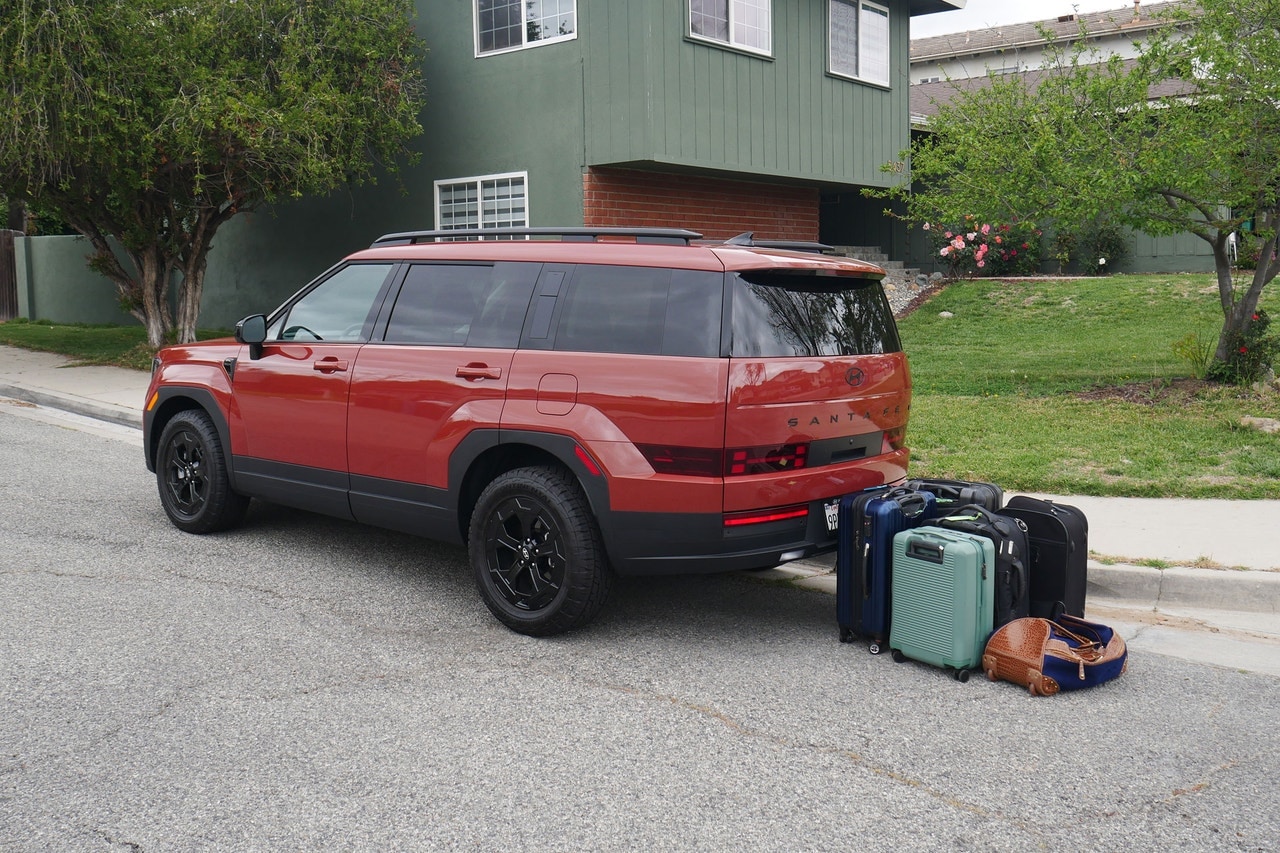
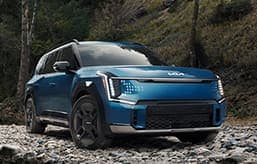

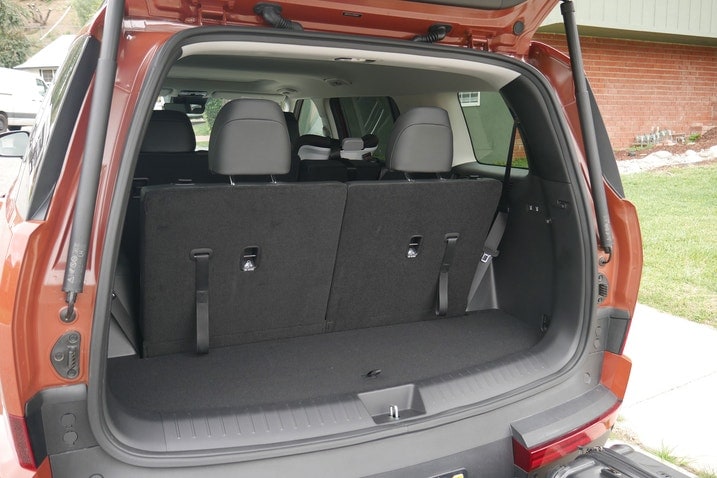
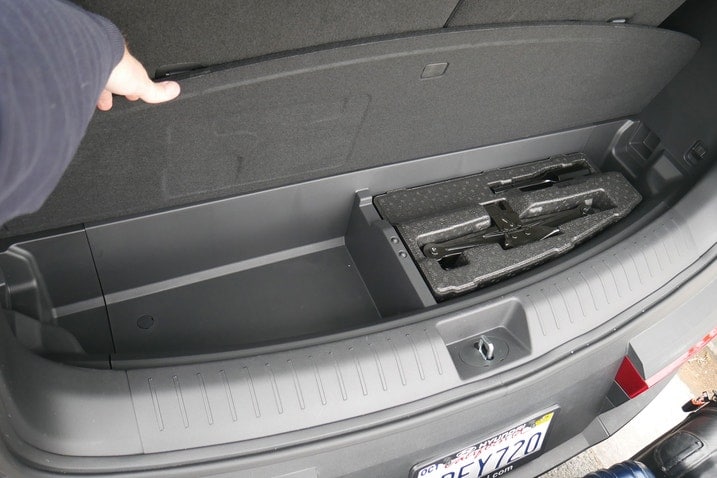

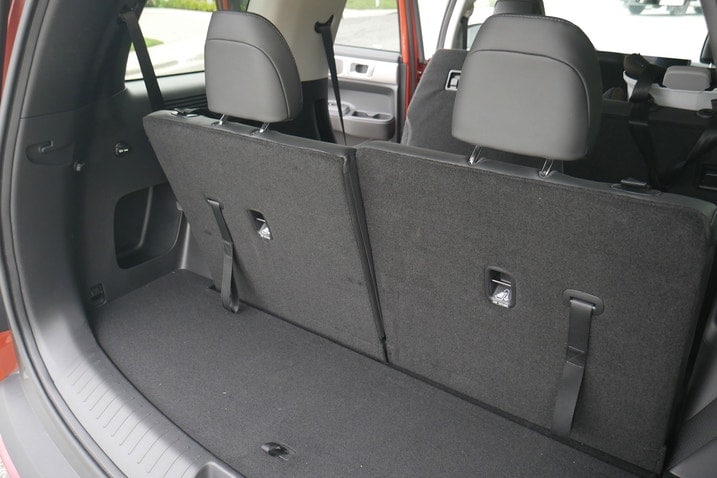


 by
by  edited by
edited by